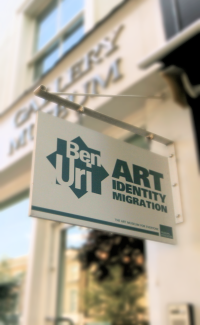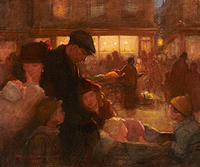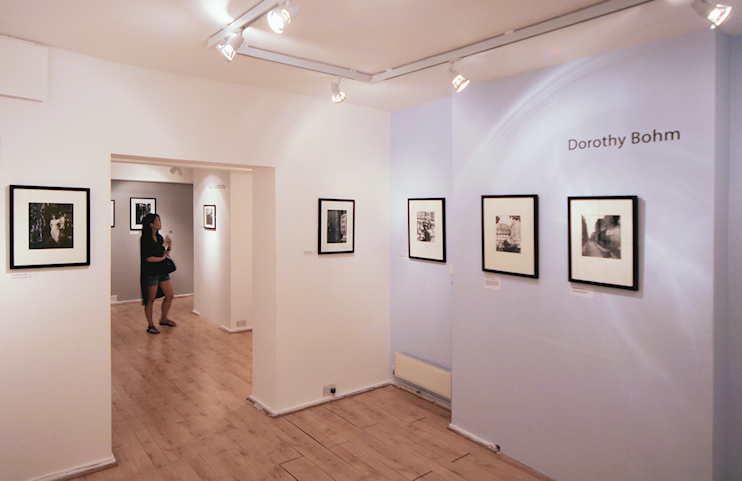Ben Uri
Art, identity and migration
Ben Uri Gallery, Boundary Road, St John’s Wood

The oldest Jewish cultural organisation in the UK, the Ben Uri arts society was founded on 1 July 1915 at a meeting held in Gradel’s kosher restaurant, near Aldgate East tube station in Whitechapel. The man who called the meeting was the Russian-born artist Lazar Berson, a charismatic figure whose Notting Hill studio served as the society’s first home and as a workshop and display space for budding artists.
The society aimed “to spread art among the Jewish masses” and was named in honour of Bezalel Ben Uri, the master craftsman said in Exodus to have been responsible for the construction of the Tabernacle and the Ark of the Covenant.
In September 1916 Lazar Berson abruptly left for America after a dispute about his political activism, and he never to returned to London. In the sudden absence of a studio the committee decided to focus on cultural activities and on building a collection of contemporary Jewish art. The society’s first acquisitions were around a dozen pieces by the wayward Pre-Raphaelite Simeon Solomon, followed by four works from David Bomberg.
The collection was stored – and later displayed – at a succession of locations in the East and West Ends. The gallery’s longest lasting base was the top floor of the West End Great synagogue in Dean Street, Soho, which it occupied from 1964 until the synagogue’s closure 33 years later. (The building is now the home of the Soho Theatre.)
To stave off a financial crisis in 1984 the collection’s most important painting was controversially sold to the Tate for £150,000. The society was granted full museum status in 1995, after pledging in its revised constitution never to allow such a sale again. When David Glasser was appointed the museum’s executive chairman in 2000 he championed a new policy focused on art, creativity and education without religious alignment. Ben Uri became ‘the [Jewish] art museum for everyone’ – taking a special interest in addressing issues of migration and identity.
In 2002 the Ben Uri gallery moved to Boundary Road, at the northern edge of St John’s Wood. This was supposed to be yet another interim residence, but no long-term home has yet been found – despite attempts to acquire various premises, including an unsuccessful bid for the Design Museum’s former warehouse in Shad Thames.

With assistance from the National Art Collections Fund, Heritage Lottery Fund and V&A Purchase Grant Fund, the gallery continues to make new acquisitions and now holds the world’s most distinguished body of work by artists of European Jewish descent, with over 1300 pieces from 35 countries, including around 850 works by émigrés.
Many of the paintings portray the lives and experiences of migrants, often in London – such as Amy Drucker’s depiction of an impoverished family, probably newly arrived in the East End, shown on the right. While the search for a permanent display space continues, you can view the whole collection online.
Meantime, the Boundary Road gallery welcomes a steady trickle of visitors to its temporary, themed exhibitions – nowadays with free admission. Space is limited on the ground floor of what is basically a converted shop, but there’s more room in the full-length basement, shown in the photograph below.
Ben Uri also provides a variety of art-related educational programmes for schools, families and adult learners, as well as running community outreach projects.


